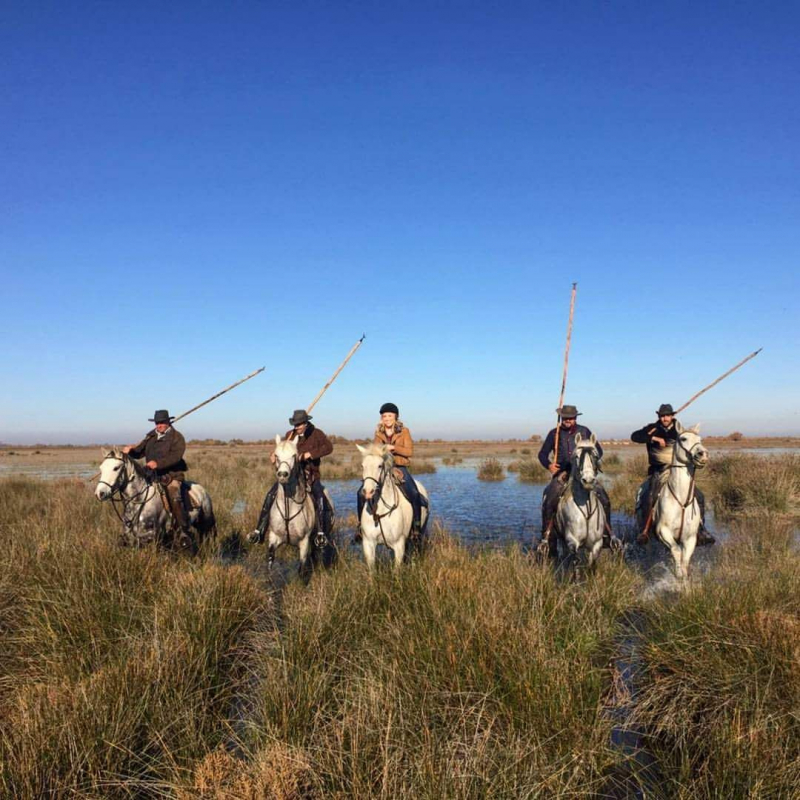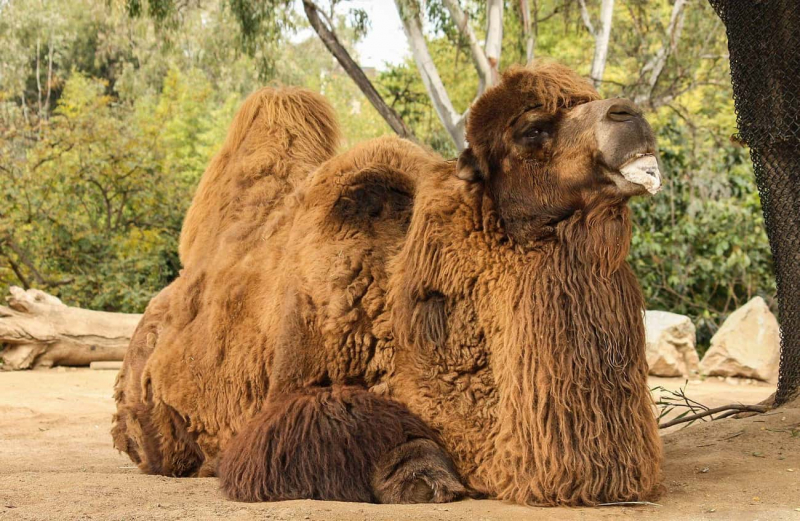Top 10 Things That Don’t Come From Where You Think
Origins are a big deal to humans. There are sizable businesses that use DNA to determine your ancestry. You want to know where new folks are from when you meet ... read more...them. You are curious about the origins of the food you consume and the educational backgrounds of influential people. This fascination in origins may have something to do with the fact that they can occasionally be rather surprising and even unexpected. Here are some Things That Don’t Come From Where You Think.
-
Few meals are as contentious as Hawaiian pizza. Pineapples on pizza are either loved or hated by people. But regardless of how you feel, it's important to understand that Hawaii's residents are in no way to blame. In the 1960s, Chatham, Ontario, invented Hawaiian pizza.
At the Satellite Restaurant in Chatham, Ontario, Canada, Sam Panopoulos, a Canadian of Greek descent, invented the first Hawaiian pizza in 1962. Panopoulos experimented with adding toppings like pineapple, ham, bacon, and other ingredients after being inspired in part by his expertise cooking Chinese meals, which frequently combine sweet and salty flavors. These additions weren't at first particularly well received.
Greek pizza had become a novelty for Sam Panapolous, the owner of a pizza restaurant. Most Canadians at the time had never experienced it before. He had "usual" toppings like pepperoni and bacon but, on a whim, decided to try pineapple. There was no justification for it. He merely had the need to give it a try and see what occurred. He was the only restaurant where you could find it for a while.

https://www.thespruceeats.com 
https://www.1310news.com -
Football vs soccer is a hotly contested topic. The majority of people prefer the word "football" when referring to sports. Of course, football already exists in America, so they use "soccer." merely a ridiculous American affixation? Not quite. Because soccer is a British term, blame them.
Rugby football and association football existed in the 1880s, which is when the distinction was made. Rugger was reduced to rugby. Football was reduced to soccer first, then to assoccer. The moniker soccer was occasionally used, although the name football was remained more prevalent.
Both gridiron and association football were played in America. But nobody refers to it as gridiron football; instead, they simply call it football. As a result, Americans now refer to association football as soccer by default. Because it was essentially and hilariously too American, soccer eventually lost popularity in England.

https://www.stadiumjourney.com/ 
http://www.football-stadiums.co.uk/ -
The word "hillbilly" is frequently used to disparage particular Southerners who are seen as lacking in culture. Similar usage of the term "redneck" is common. Due to their longevity, you've probably heard all the stereotypes. Since Beverly Hillbillies premiered in 1962, the concept has become firmly entrenched. Although both of these words appear to be used almost exclusively to make fun of a particular segment of the American people, they are both Scottish in origin.
Following a coup against the previous king, James II, William of Orange was anointed king of England, Ireland, and Scotland in 1669. James ran away while preparing an Irish counterinvasion. However, William's supporters were hiding and waiting in the hills. Because they backed William, a.k.a. Billy, they were known as "billyboys" at the time. Therefore, the hillbillies became hillbillies.
Many Scottish and Irish immigrants who arrived to America in the 1700s settled in the Appalachian Mountains, which are now the region where the word "hillbilly" is most frequently used. Rednecks supported the Scottish Presbyterian Church. They sported crimson scarves around their necks to stand out from the crowd. The Presbyterian rednecks, like their hillbilly counterparts, settled some of the south; the English had populated a large portion of the north. Even for their forefathers, the term "redneck" persisted.
https://traveladventureeverywhere.blogspot.com 
https://uncover.travel -
In part because it is one of the more recent nations in the globe, American history may be broken down into manageable chunks for study and comprehension. The Frontier and the movement west are two such sections that garner a lot of interest. Historically significant in American culture are the "days of the cowboy." Surprisingly, the concept of the cowboy itself is not particularly American. It may be traced back to Europe, which, despite lacking a Wild West of its own, developed many of the cowboy clichés we now associate with America.
In North America, horses had been extinct for roughly 10,000 years. Explorers from Spain brought them back into existence. Horse breeding and raising cattle truly have a long and illustrious history in Spain. Both of those things developed along the same timeline as in classic cowboy tales. Cattle drives, rustling, and raising on the broad plains are all done by men riding horses. Even before any Europeans arrived in America, the situation was widespread in Spain.
Additionally, Hungary had the csiko horsemen and the Iberian and Andalusian cattlemen. However, it is possible that the Mexican vaqueros, who possessed the appearance and even the language of the original cowboys, were the ones who most heavily influenced American cowboys. These vaqueros traveled to California with Kino, a Jesuit priest who was possibly the first cattleman in the American West.
https://www.stocksy.com/ 
https://www.pinterest.com/ -
Consider Italian cuisine without tomatoes. Yes, there are many delicious dishes that do not contain tomatoes, but you would lose a lot. The same is true with Spanish food. Despite being so common in European cooking, tomatoes are not indigenous to the region. They were first found growing untamed in the Andes of Central and South America. They have been linked to Ecuador going back as far as 80,000 years. Around 500 BC, they relocated to Mexico, where they established themselves as a culinary mainstay.
The tomato would have traveled to Europe with Columbus and Cortez. When tomatoes first came in the 16th century, the English didn't like them because they believed they were poisonous, but they thrived in the Mediterranean and by the 17th century, they had become a staple of Spanish cuisine.

http://nomadicboys.com 
https://thetaxonomicbotanist.tumblr.com/ -
Most people in the globe are now familiar with the McDonald's Happy Meal, a children's meal that is sold by McDonald's and has even been the subject of legal disputes because, in some countries, advertising to children is prohibited. However, the Happy Meal's original purpose was to simply provide a kid-sized meal that young children could consume when a regular meal was too large. And Guatemala is where it was created.
In 1974, Yolanda Fernández de Cofio inaugurated the first McDonald's in Guatemala. She noticed that many children left their meals incomplete because they were unable to eat a Big Mac, so she thought a smaller amount with a toy may be entertaining.
She didn't get permission to prepare the lunch, but because it was well-received, the corporate office included it to the menu in 1979. There is a complication in this situation because Dick Brams claims to have created the Happy Meal in St. Louis. However, Bob Bernstein, the person he phoned to discuss it, claims that he had already created it at that point. And the former vice president of McDonald's claims that Burger Chef, a rival, was the source of the inspiration.
McDonald's referred to Dick Brams as the "father of the Happy Meal" when he passed away. But when a reporter from the Chicago Tribune called McDonald's to find out who came up with the idea, they said Yolanda Fernández de Cofio, who was by then the president of McDonald's Guatemala, had devised it once more.

http://www.pghmomtourage.com/ 
https://www.cnbc.com/ -
There are certain creatures that are associated with every nation. Bald eagles live in America, pandas live in China, and lions live in Kenya. And if you asked someone where they thought camels may be, they might have suggested Somalia. There are about half of the world's camels, although they are also well-known in other African and Middle Eastern countries. Basically, camels appear to be found in any location that appears to be extremely hot and dry. But this wasn't always the case.
Although they now live elsewhere, camels are native to North America. Big camels once roamed ancient Canada, according to fossil evidence. To find the monsters, you have to go back a long way. It takes a long time to find the creatures, and it is thought that North America was where they initially appeared some 45 million years ago. They likely moved in small herds of families and ranged from Alaska to Mexico.
Around 12,000 years ago, these North American camels were extinct. They perished due to early hunters and a changing climate, although their cousins who had expanded to other parts of the planet prospered.
https://insh.world/ 
https://www.ranker.com -
Some people adore spicy food and believe that the hotter, the better. They'll consume Thai or Indian dishes that may bring someone to tears. But if you enjoy spicy food, those two countries make some of the greatest and spiciest dishes. Ironically, neither country is home to any natural hot peppers.
About 5,800–6,500 years ago, the first domesticated chile peppers appeared in Central Mexico. When Columbus found the New World, he would have encountered them. They were not favorably received when they were brought back to Europe. Some people reportedly believed the peppers would cause their jaws to burn for days, according to a Flemish physician.
In 1540 and 1542, respectively, they traveled to Indonesia and India at the same time as Europe was fleeing from hot peppers out of terror. Unlike their European neighbors, these folks fell in love with them and quickly incorporated them into their own cuisine. In 2006, the Bhut Jolokia, sometimes known as the ghost pepper, which is from Northeast India, was acknowledged by Guinness as the hottest pepper in the world.

http://www.thisfabtrek.com 
https://fineartamerica.com -
The expression "American as apple pie" occasionally appears when you wish to describe something as really American. Apples are often used to describe American history. Consider the story of Johnny Appleseed. However, if you go back far enough, you'll discover that apples aren't even particularly American. Over the years, they have traveled the world extensively, much like many other crops.
Kazakhstan is where apples really first appeared. The origin of all modern apples was discovered by Russian scientists to be a kind of crabapple named Malus sieversii that is native to the area. In Kazakhstan, apples were quite popular, and Alma Ata, the country's capital, means "full of apples."
Apple seeds had already spread throughout Europe by 1500 BC. They were raised by the Greeks, Romans, and Etruscans and were widely used in daily life. In the 16th century, French Jesuits transported apple seeds when they traveled to the New World. In 1620, trees were brought from England and planted all throughout Massachusetts. More than 90% of the farms in the state had apple orchards by 1644.

https://trip101.com 
http://www.ethansoloviev.com -
You either adore or detest the hairless sphynx cat. Even so, they might take some getting used to. You would assume they are Egyptian cats given their lack of fur and namesake, the Sphynx from Egypt, one of history's most recognizable images. It makes sense that a cat with no ability to stay warm would have come from a scorching, desert region. The contrary is, in fact, the case.
Toronto, Canada, is where sphynx cats first appeared. The complete antithesis of Egypt might be this. The first Sphinx in history was a tiny Canadian kitten named Prune who was born among a litter of ordinary-looking, fully-haired kittens.
Because cat breeding can be strange at times, a breeder who recognized the hairlessness as an indication of a recessive gene ultimately bred the little guy with his own mother. Even more kittens without hair were the outcome. The possibility of breeding the cats made them appealing, and a new breed was created to help those with cat allergies.

https://jsndlast.blogspot.com/ 
https://www.ctvnews.ca/































